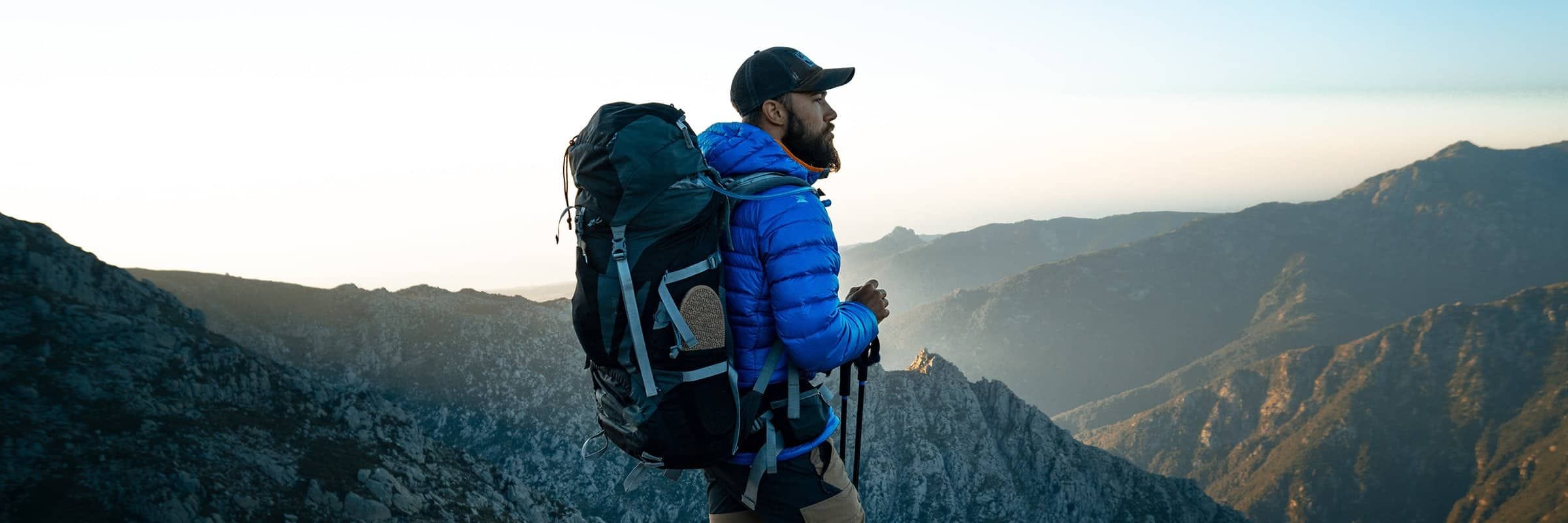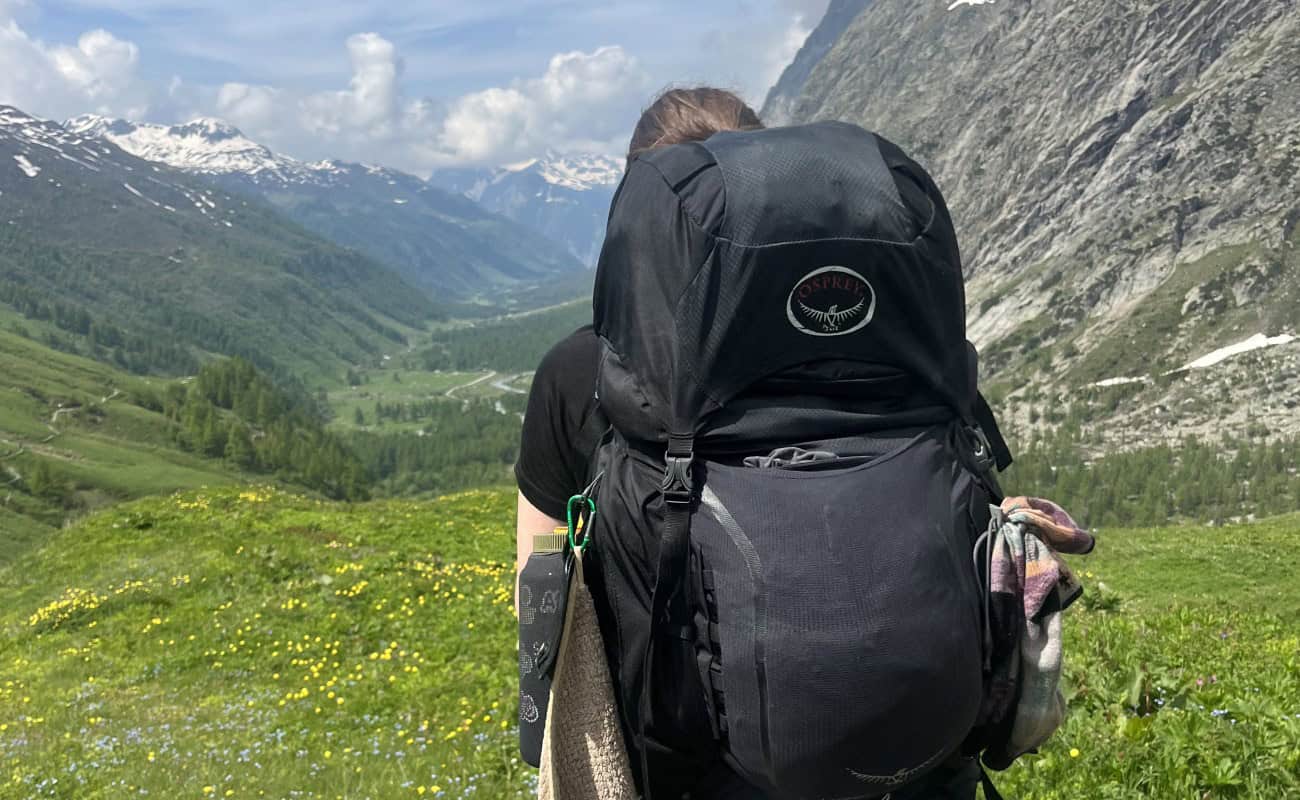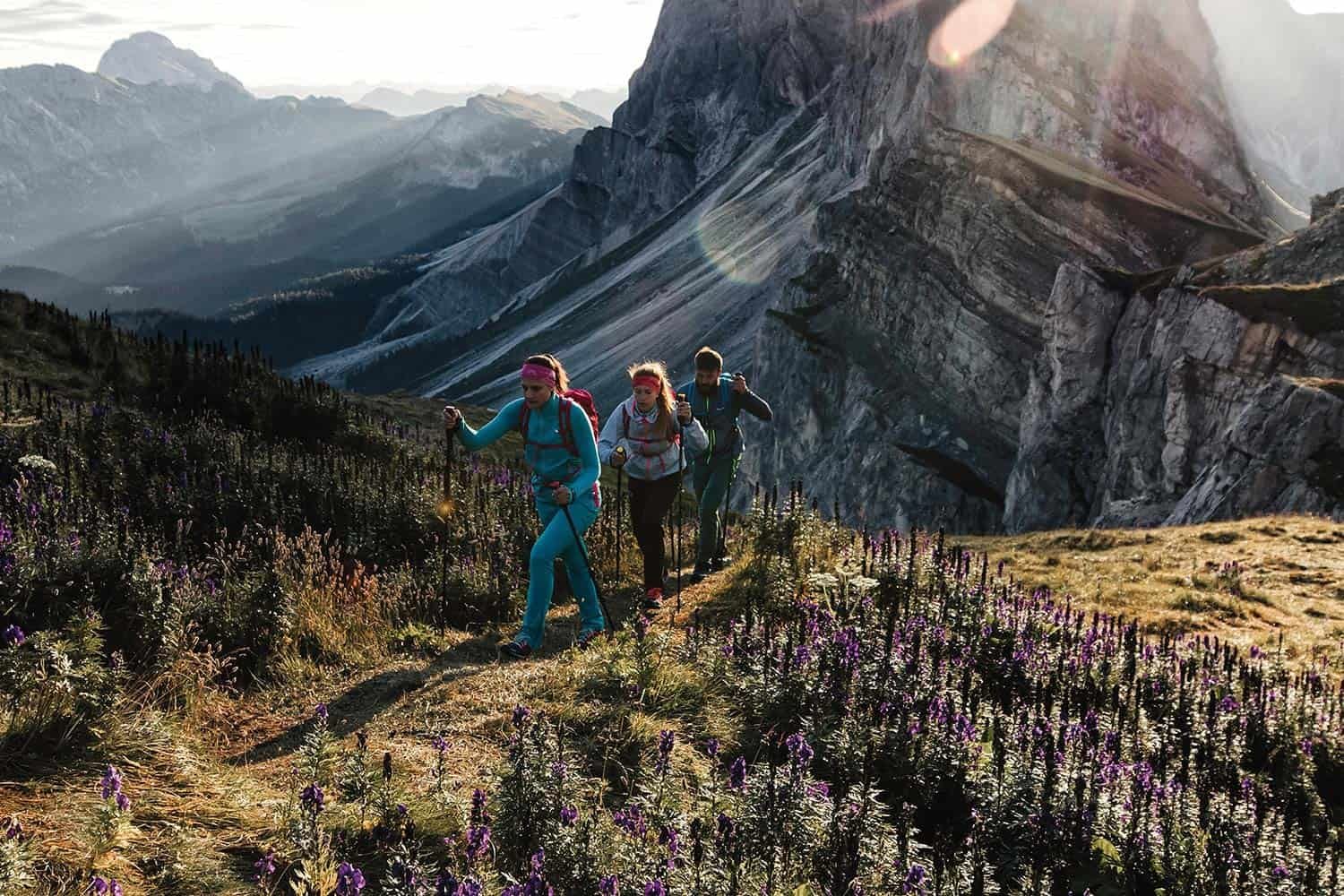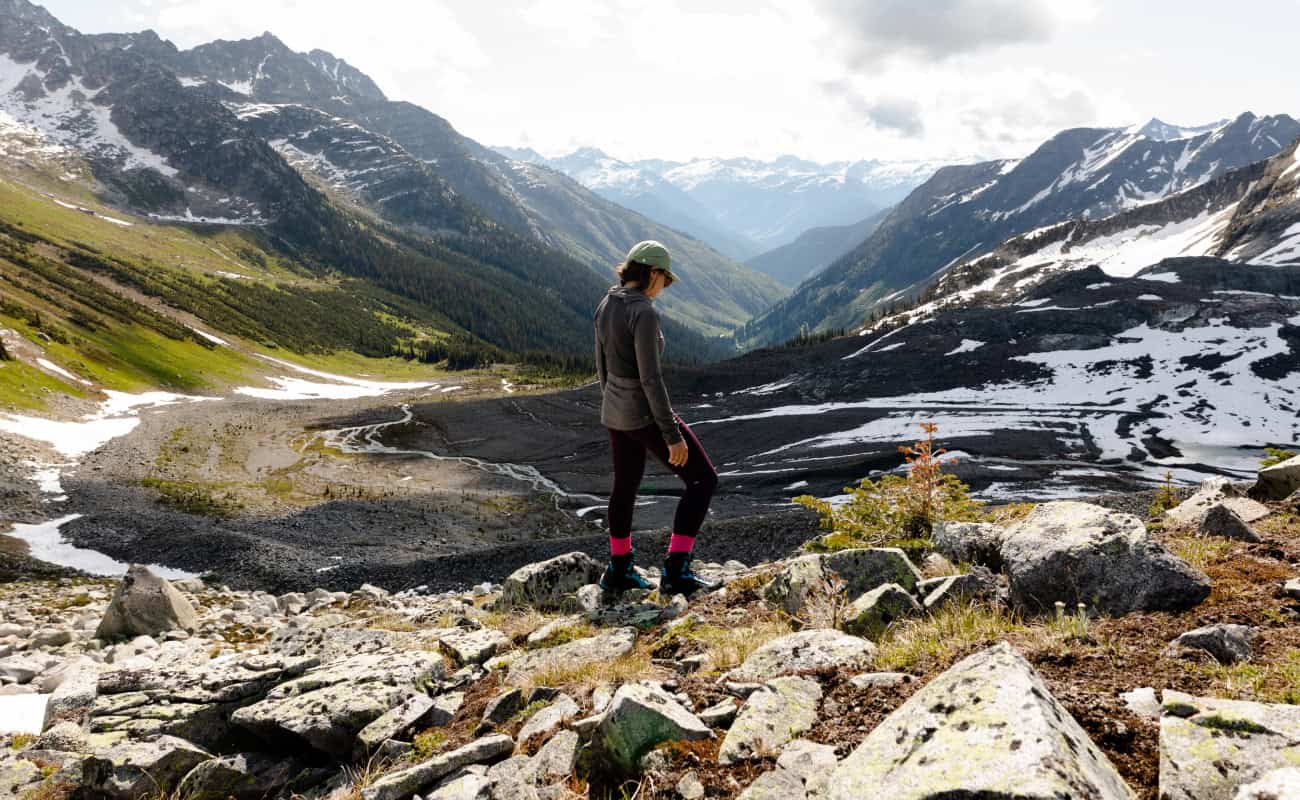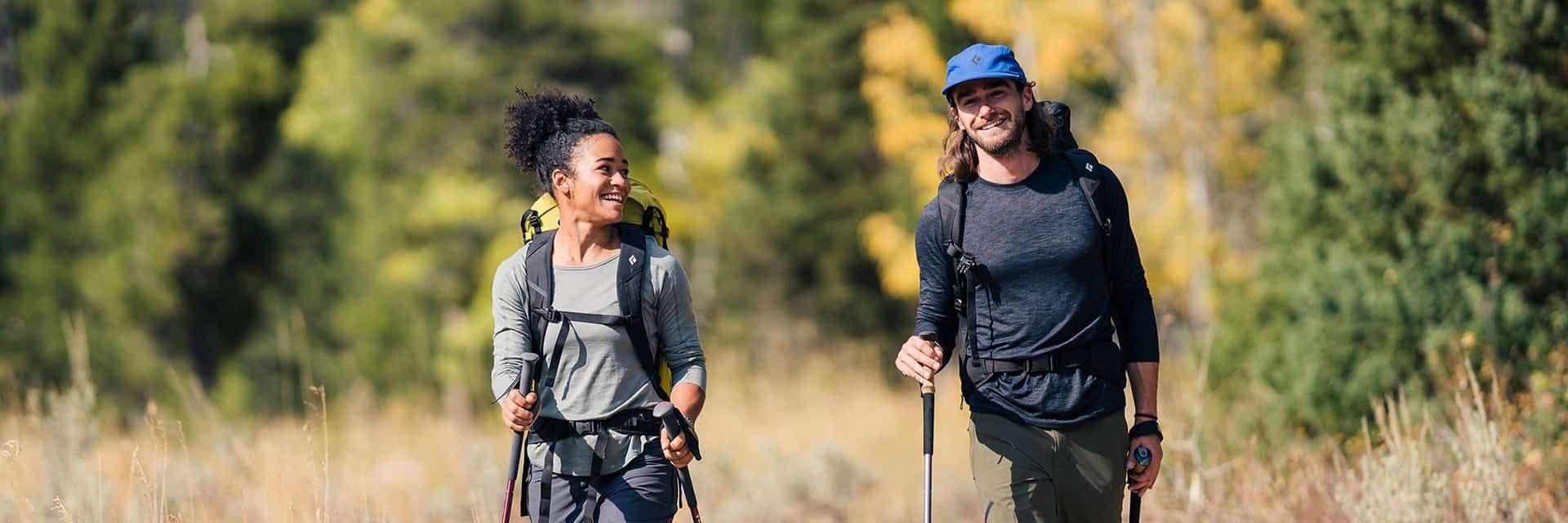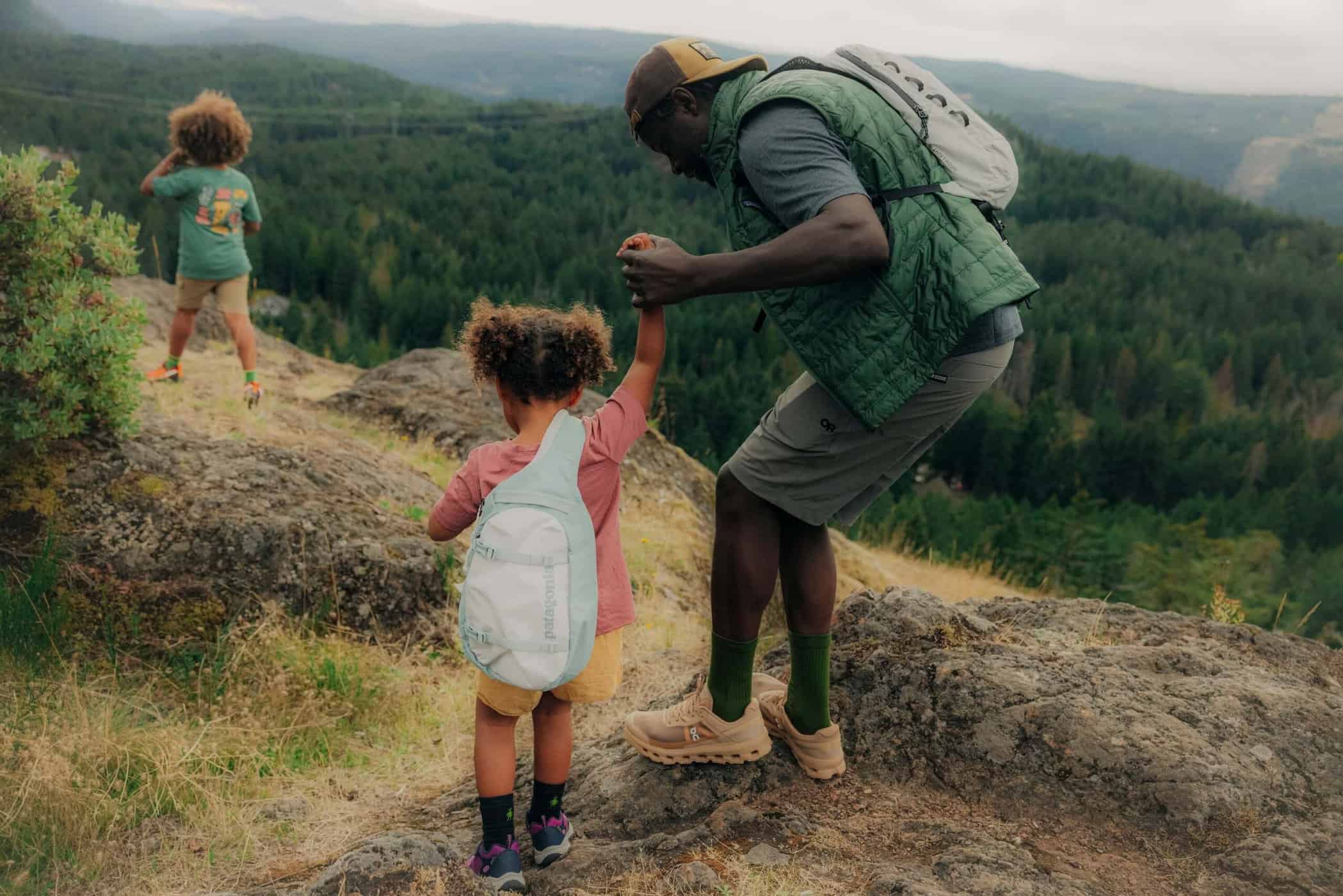Choosing the right backpacking pack isn’t just about volume—it’s about balance. A pack that fits poorly or lacks the features you need can leave you sore, overheated, or constantly digging for gear.
Whether you’re prepping for a weekend hike, a thru-trek, or your first backcountry trip, this guide will help you figure out how to choose a hiking backpack that fits your body, matches your trail goals, and keeps you moving comfortably.
We’ll walk you through types of hiking packs, how to measure your torso, which features actually matter, and what to look for depending on your experience level and budget. From ultralight backpacks for hiking to the best trekking packs of 2025, this is your all-in-one reference.
Table of Contents
Types of Hiking Backpacks
Before diving into fit and features, it’s important to understand the different types of hiking backpacks—and what they’re built for. The size, structure, and style of your pack should reflect the duration of your trip, the terrain, and your carrying needs. Below are the three main categories to consider.
Daypacks (15–30L)
Perfect for short hikes, urban trails, or summit missions, daypacks are compact and lightweight. Most don’t include a pack frame, though higher-end models may offer hydration pack compatibility, basic suspension systems, and ventilated back panels.
- Best for: Half-day hikes, trail running, travel
- Look for: Internal sleeve for a hydration bladder, hip belt (optional), zippered top or clamshell opening
- Top pick: For both men and women, the Osprey Skarab Hiking Backpack with Reservoir is a lightweight and breathable daypack with a multi-sport pedigree.
Our pick: Osprey Skarab 22
Brand Name | Product Type
Product Name
Price: 0.00$
For quick hikes on local trails, convenient hydration makes stretching your legs-and the miles-a breeze. The Skarab 22-litre is a no-frills, all-essentials hiking pack that adds a little room for extra gear, layers or snacks for extended trips. Its priority is comfortability for moderate hikes and daily exploration, with internal reservoir sleeve and simple organisation so you can carry just what you need.
Price: 0.00$
- Lorem ipsum dolor<\/li>
- Lorem ipsum dolor<\/li>
- Lorem ipsum dolor<\/li><\/ul>","_id":"f4a673e"},{"feature":"
- Lorem ipsum dolor<\/li>
- Lorem ipsum dolor<\/li>
- Lorem ipsum dolor<\/li><\/ul>","_id":"0ebfa2f"}],"single_product_id":"","cta_1_url":{"url":"https:\/\/www.altitude-sports.com\/products\/osprey-skarab-hiking-backpack-with-reservoir-22l-mens-llll-osp-skarab2223 ","is_external":"","nofollow":"","custom_attributes":""},"cta_2_url":{"url":"","is_external":"","nofollow":"","custom_attributes":""},"credit":null,"limit":null,"collection_link":null}
Overnight & Weekend Packs (30–50L)
This is the sweet spot for most hikers. A weekend or overnight pack offers enough room for your sleep system, layers, food, and cooking gear, while staying agile enough for alpine trails and backcountry scrambles. Some include removable lids or expandable compartments for flexibility.
- Best for: 1–3 night trips
- Look for: Compression straps, load lifters, hydration system ports, front access
- Top pick: For men, the Gregory Zulu 30 is well-ventilated, comfortable, and just the right volume for a weekend escape. For women, check out the Osprey Eja 48—a supportive, mid-size, lightweight option.
Our picks: Zulu 30 + Eja 48
Brand Name | Product Type
Product Name
Price: 0.00$
Designed to offer maximum comfort on the trails, the Zulu 30 by Gregory has enough space for all your gear. An integrated rain cover can be pulled out in a flash when the rain starts to fall. With a front u-zip main compartment access, internal hydration sleeve, hip belt pockets and a stretch stuff pocket, it’s perfect for a two-day adventure. We would’ve liked straps to carry a mattress, but it remains a great, comfortable pack.
For women, check out the Osprey Eja Backpacking Pack 48L. It's the perfect women's pack to carry when every ounce matters, but you still need to count on your pack for a supportive carry.
Price: 0.00$
- Lorem ipsum dolor<\/li>
- Lorem ipsum dolor<\/li>
- Lorem ipsum dolor<\/li><\/ul>","_id":"f4a673e"},{"feature":"
- Lorem ipsum dolor<\/li>
- Lorem ipsum dolor<\/li>
- Lorem ipsum dolor<\/li><\/ul>","_id":"0ebfa2f"}],"single_product_id":"","cta_1_url":{"url":"https:\/\/www.altitude-sports.com\/products\/gregory-backpack-zulu-30-mens-llll-gre-111568","is_external":"","nofollow":"","custom_attributes":""},"cta_2_url":{"url":"https:\/\/www.altitude-sports.com\/products\/osprey-eja-48-backpack-womens-llll-osp-eja48w","is_external":"","nofollow":"","custom_attributes":""},"credit":null,"limit":null,"collection_link":null}
Multi-Day & Trekking Packs (50–70L)
These packs are made for serious backcountry expeditions or long-distance treks. They prioritize load distribution, durability, and weather protection. Many include sleeping bag compartments, external lash points, and advanced suspension systems for heavy hauling.
- Best for: 3–10 day trips, thru-hikes, alpine trekking
- Look for: Adjustable torso length, high-capacity hip belts, modular gear storage
- Top picks: For women, the Osprey Aura AG Backpacking Pack 65L fits the bill—lightweight but rugged, this pack’s smart organization makes it ideal for long-haul trips. Guys, pick up the Osprey Atmos AG LT Backpacking Pack 65L for a lightweight pack that doesn’t compromise on comfort or capacity.
Expert Insight: “People often overestimate how much space they need. I always tell beginners: start with the smallest pack that fits your essentials. A smaller pack means less weight, better balance, and fewer sore muscles by day’s end.”
— Marco S.L., Backpacking Specialist at Altitude Sports
TOP PICKS: Aura AG 65 + Atmos AG 65
Brand Name | Product Type
Product Name
Price: 0.00$
Tackle heavyweight weekends or weeklong backpacking trips with gravity-defying comfort and premium ventilation with the Aura AG 65. Featuring a women's-specific fit, its innovative suspension and harness delivers a seamless fit that envelopes your back and hips in 3D-suspended mesh. From easy-to-use stretch mesh side pockets, Stow-on-the-Go trekking pole attachment and integrated raincover, the Aura AG 65 is a compromise-free women's backpacking pack. Made with recycled main, accent and bottom fabrics.
Guys, when the journey calls for a lightweight pack but you can't afford to compromise on comfort and carry capacity, the streamlined Atmos AG LT 65 proves it’s possible to optimise for both.
Price: 0.00$
- Lorem ipsum dolor<\/li>
- Lorem ipsum dolor<\/li>
- Lorem ipsum dolor<\/li><\/ul>","_id":"8f04da9"},{"feature":"
- Lorem ipsum dolor<\/li>
- Lorem ipsum dolor<\/li>
- Lorem ipsum dolor<\/li><\/ul>","_id":"1e86c54"}],"single_product_id":"","cta_1_url":{"url":"https:\/\/www.altitude-sports.com\/products\/osprey-aura-ag-65l-backpack-womens-llll-osp-aura65w","is_external":"","nofollow":"","custom_attributes":""},"cta_2_url":{"url":"https:\/\/www.altitude-sports.com\/products\/osprey-atmos-ag-lt-backpacking-pack-65l-llll-osp-atmos65s22","is_external":"","nofollow":"","custom_attributes":""},"credit":null,"limit":null,"collection_link":null}
Extended Trips and Expeditions (70L+)
When you’re heading out for 5+ nights, on remote treks, mountaineering missions, or unsupported expeditions, you’ll need a pack that can handle bulky gear, extra food, and heavier loads.
While bigger isn’t always better, packs in the 70–80L+ range are essential when resupply isn’t an option. Just remember: added volume means added weight—so pack intentionally.
- Best for: 5+ night trips, alpine expeditions, gear-intensive adventures
- Look for: Durable materials, adjustable suspension systems, external attachment points, weather resistance
- Top pick: For men, the Osprey Aether Pro Mountaineering Pack 75L boasts exceptional carry for expedition loads, with a rugged design, high-performance suspension for alpine pursuits or extended backcountry travel. For women, the Fairview Trek Backpack 70L blends trekking performance with travel versatility.
Top Picks: Fairview Trek 70 + Aether Pro 75
Brand Name | Product Type
Product Name
Price: 0.00$
For the experienced backpacker, guide, mountaineer or adventurer, there's no better tool for the job than the Aether Pro 75. A heavy-duty, customisable suspension system in a lighter package allows you to remain agile under a heavy load. Certified bluesign approved.
For women, the Fairview Trek 70 is the perfect backpack for wanderlust wanderers and travel-backpackers.
Price: 0.00$
- Lorem ipsum dolor<\/li>
- Lorem ipsum dolor<\/li>
- Lorem ipsum dolor<\/li><\/ul>","_id":"99fa39a"},{"feature":"
- Lorem ipsum dolor<\/li>
- Lorem ipsum dolor<\/li>
- Lorem ipsum dolor<\/li><\/ul>","_id":"ef97d47"}],"single_product_id":"","cta_1_url":{"url":"https:\/\/www.altitude-sports.com\/products\/osprey-aether-pro-mountaineering-pack-75l-mens-llll-osp-aethpro75","is_external":"","nofollow":"","custom_attributes":""},"cta_2_url":{"url":"https:\/\/www.altitude-sports.com\/products\/osprey-fairview-trek-70l-backpack-womens-llll-osp-fairt7058","is_external":"","nofollow":"","custom_attributes":""},"credit":null,"limit":null,"collection_link":null}
How to Choose the Right Size
When it comes to choosing a hiking backpack, volume is just the beginning. You want a pack that’s big enough to carry your gear—but not so big that it tempts you to overpack. The right size depends on trip length, activity type, and your packing style.
Here’s a quick guide to help you choose the correct litre capacity:
Backpack Volume by Trip Length
Trip Duration | Recommended Volume |
Day Hike | 15–30L (Daypack) |
1–3 Nights | 30–50L (Weekend) |
3–5 Nights | 50–70L (Multi-day) |
5+ Nights | 70L+ (Extended) |
Pro Tip: If you’re hiking in warm weather and packing light, you can size down. Cold-weather or group gear usually requires more space.
Balance Size With Weight
Larger packs allow more room, but they come with a tradeoff: more volume = more potential weight. A 70L pack stuffed with non-essentials will slow you down—and may cause fatigue or injury over long distances.
This is where ultralight backpacks for hiking come in. Some experienced backpackers downsize to a 50L pack or smaller by using minimalist gear and sharing loads.
Match Size to Your Packing Style
If you like to bring extras (camp shoes, luxury meals, DSLR), size up. If you’re disciplined about gear and want to move fast, aim for the smallest pack that still fits your shelter, sleep system, and food.
And remember: the pack must fit you, not just your gear. We’ll cover how to measure your torso length and hip width in the next section.
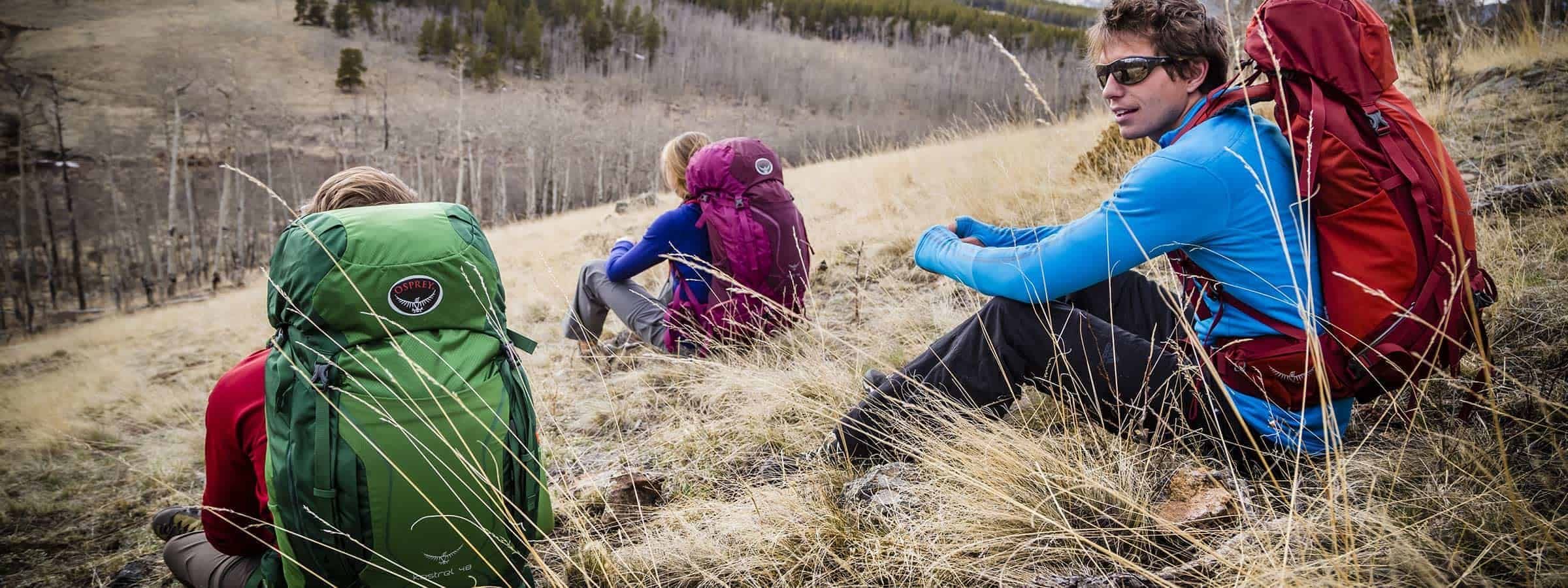
Backpack Fit: Torso Length & Hip Belt Sizing
You’ve found the right volume—now you need a pack that actually fits. A poorly fitted backpack can lead to sore shoulders, lower back strain, or just a plain miserable hike. When you’re choosing a hiking backpack, fit matters as much as features.
Here’s how to dial in the perfect size.
Step 1: Measure Your Torso Length
To find your torso length, start by tilting your head forward to locate your C7 vertebra—the bony bump at the base of your neck. Now, place your thumbs at the top of your hip bones and draw an imaginary line across your lower back. Finally, measure the vertical distance between the C7 and this line. That number is your torso length.
Most packs come in multiple size ranges (XS, S, M, L), which correspond to specific torso lengths. Always refer to the brand’s sizing chart—you might be a Small in Osprey, but a Medium in Gregory.
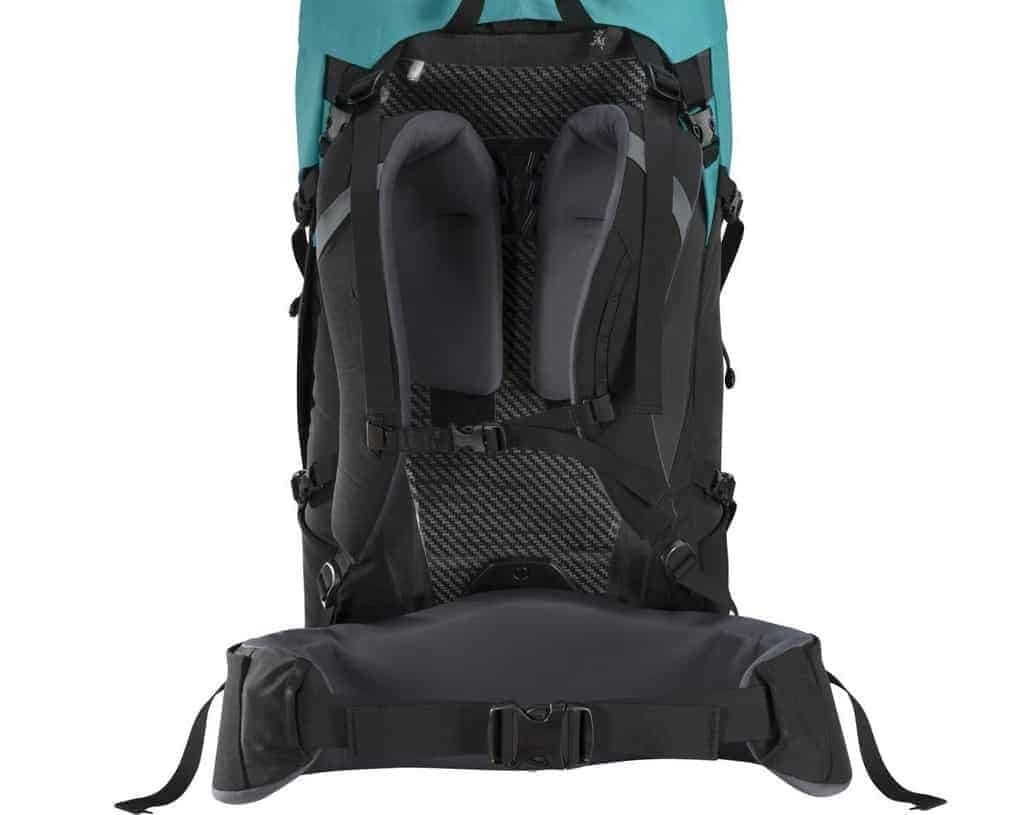
Step 2: Check Your Hip Belt Fit
Your backpack’s hip belt should sit comfortably on the top of your hip bones—not around your waist like a belt. This is where the majority of your pack weight (up to 80%!) should rest.
A good fit should:
- Wrap snugly around your hips without pinching
- Allow some adjustability for layering or body fluctuation
- Include well-padded wings with accessible pockets
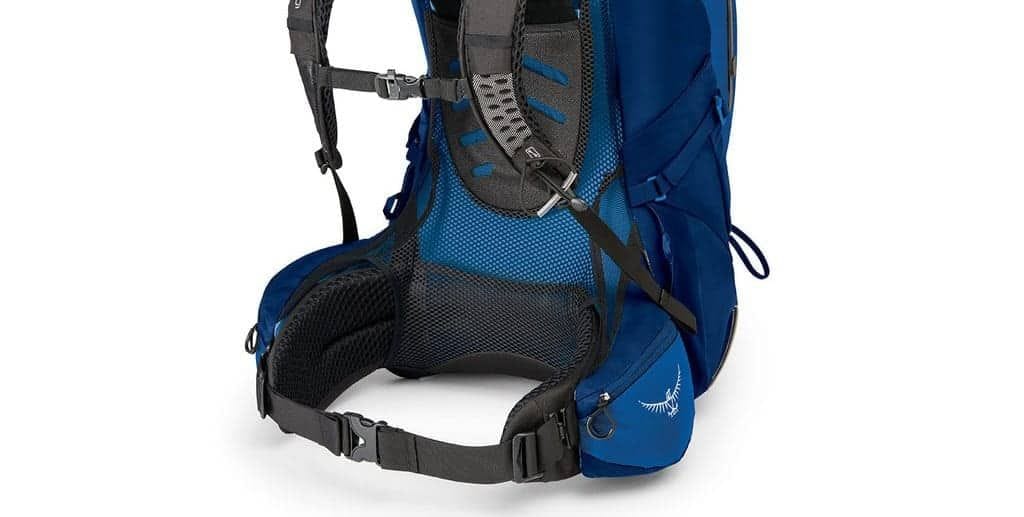
Step 3: Test the Fit (Fully Loaded)
When trying on a hiking backpack, add weight—jackets, books, or gear—so you can feel how it distributes under load. Then:
- Tighten the hip belt so it hugs your hips
- Pull the shoulder straps snug, keeping them flush with your back
- Adjust the load lifters at a 45° angle for balance
- Buckle the sternum strap and walk around—twist, jog in place, move naturally
A well-fitting backpack should feel stable and snug, without any major pressure points or wobble.
Expert Insight: “The biggest myth I see is people adjusting their shoulder straps first. Always start at the hips—it’s a game changer for comfort, especially on long hikes.”
— Renée D., Outdoor Gear Educator at Altitude Sports
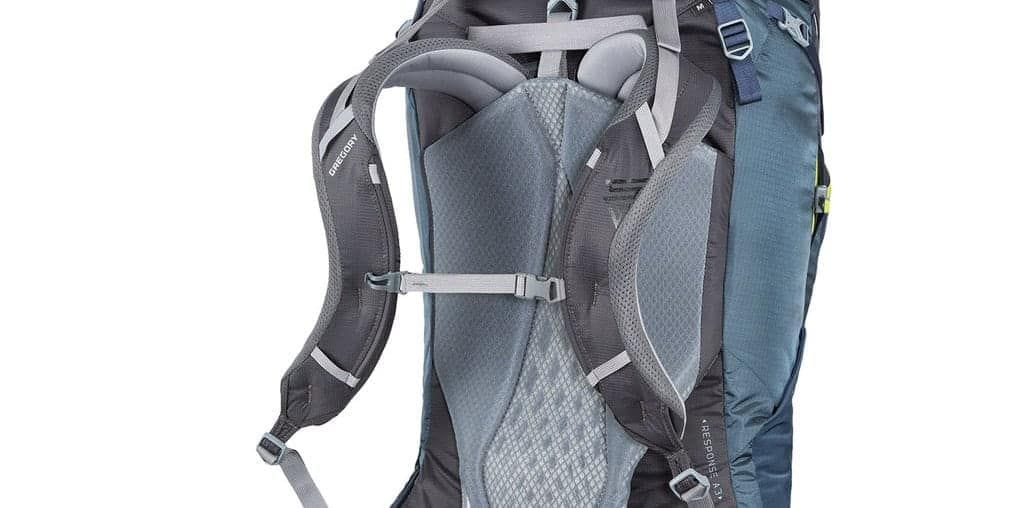
Essential Features to Look Out For
Not all hiking packs are created equal—and it’s often the features that separate a good pack from a great one. From hydration sleeves to hip belts, these design elements can dramatically improve your comfort, efficiency, and performance on the trail. Below is a quick breakdown of the most important features to look for when choosing your next hiking backpack.
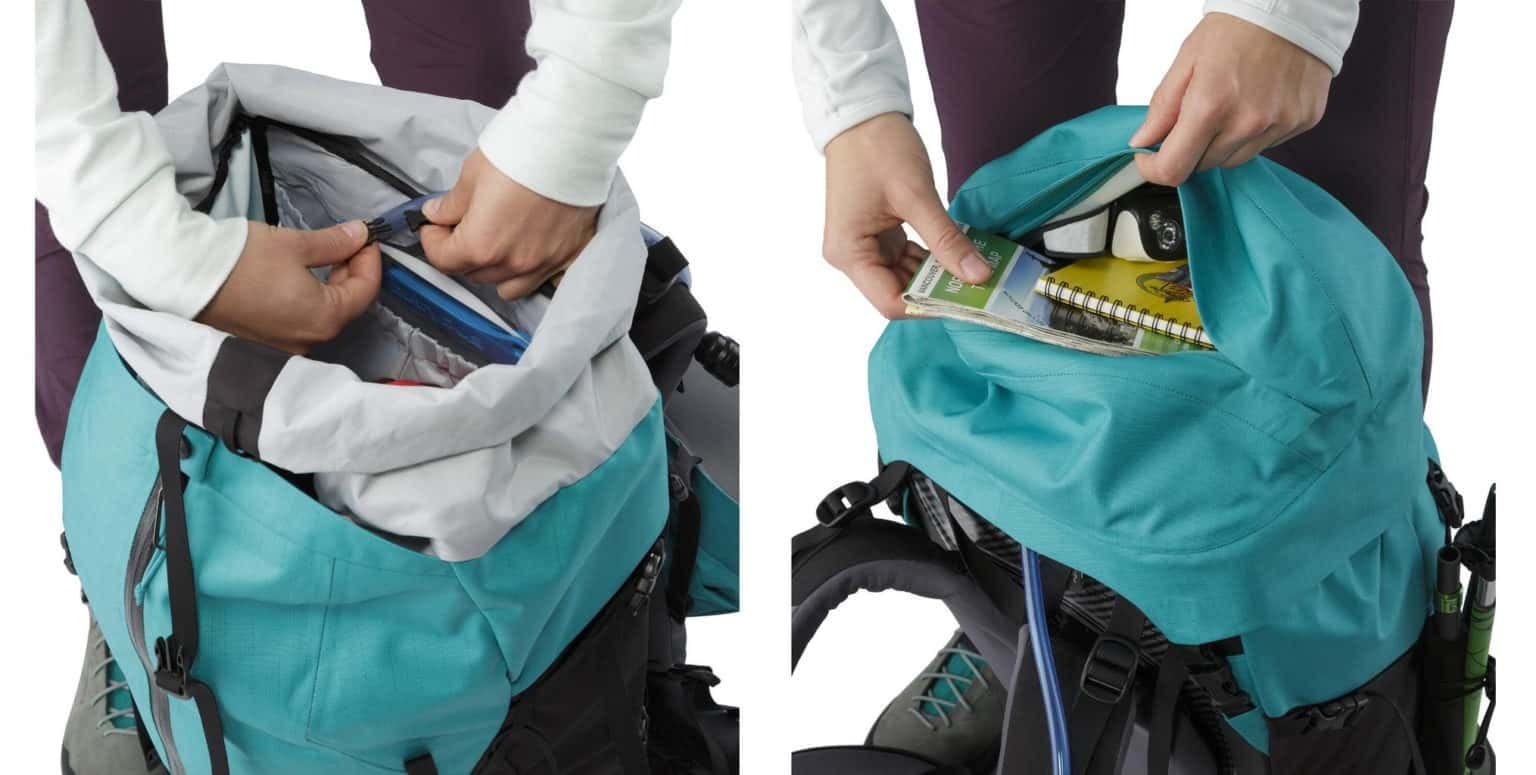
Feature | What It Does |
Internal Frame | Stabilizes load by hugging the body; best for most backpackers |
Ventilated Back Panel | Enhances airflow to reduce back sweat on long hikes |
Load Lifters | Pulls weight closer to your center of gravity for better balance and comfort |
Padded Hip Belt | Transfers most of the pack weight to your hips—crucial for heavier loads |
Hydration Sleeve | Holds a water reservoir with hose access for hands-free hydration |
Front, Side * Water Bottle Pockets | Mesh or zip pockets for stashing water bottles, layers, or snacks—ideal for quick-access storage |
Sleeping Bag Compartment | Separate bottom access for easy retrieval of items like sleeping bags and better organization |
External Straps & Loops | Attach bulky gear like trekking poles, foam pads, or tents externally |
Top or Side Access | Makes it easier to reach buried gear without unpacking everything |
Removable Daypack | Detachable lid or pack for side missions from basecamp |
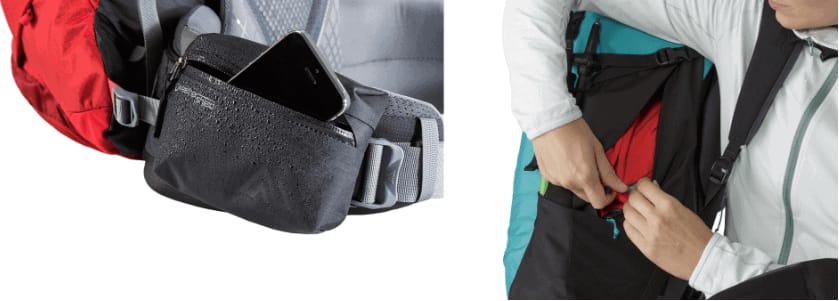
Expert Insight: “Features should match your trail style. If you’re hiking in hot weather, prioritize ventilation. If you’re basecamping, go for modular storage. The right details make hard miles a lot easier.”
— Renée D., Outdoor Gear Educator at Altitude Sports
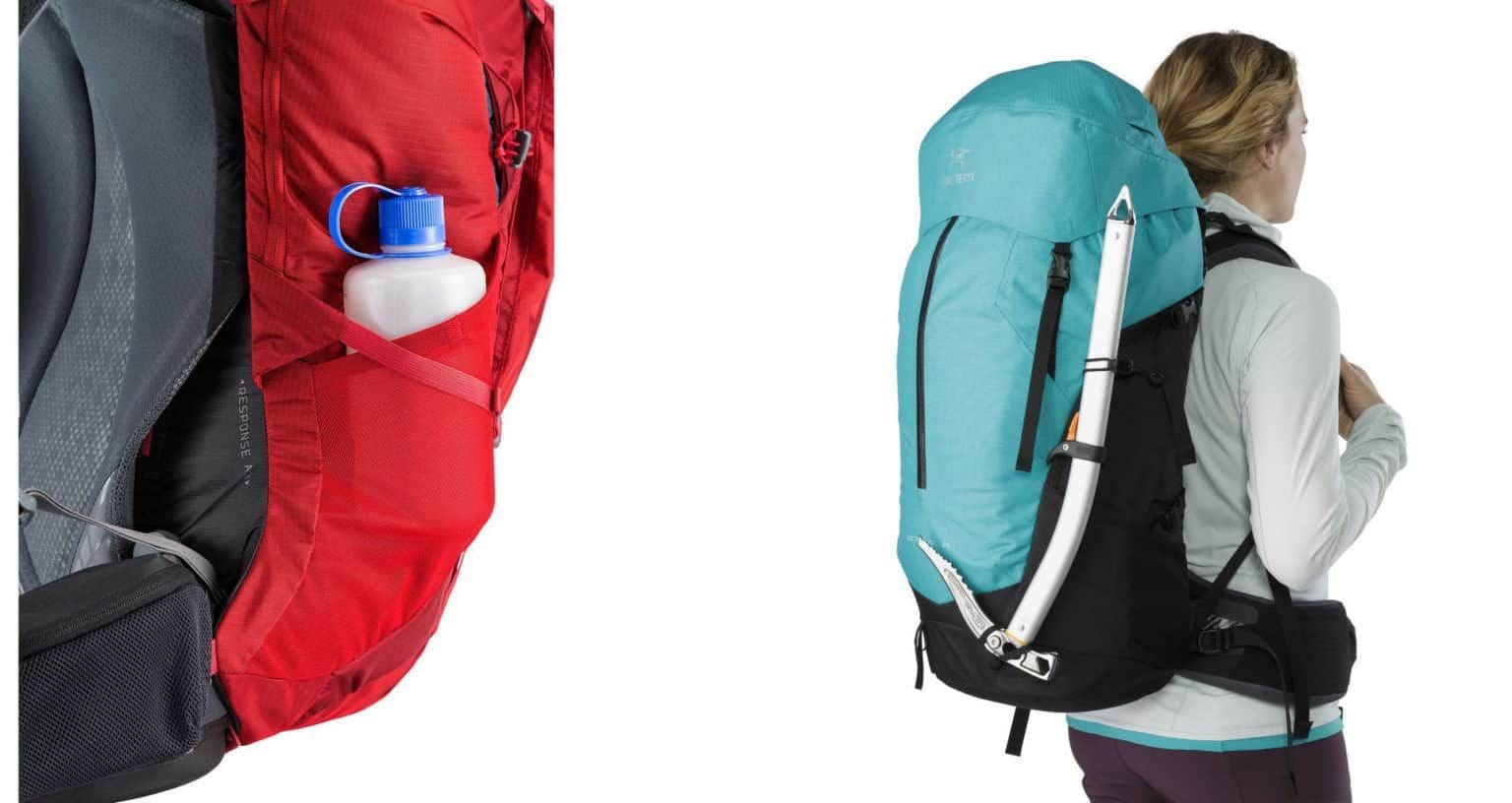
Recommendations by Use Case
As you’ve surely come to realize, there’s no one-size-fits-all pack. The best hiking backpack for you depends on your experience, anatomy, and the kind of hiking you do. Below are some recommendations based on common user profiles we see.
For Beginners
If you’re just getting into hiking or overnight trips, start with a supportive, easy-to-adjust backpack that won’t overwhelm with features. Look for something in the 30–50L range for flexibility and room to grow.
Top pick: Gregory Zulu 30 / Eja 48
- Well-ventilated back panel
- Integrated rain cover
- Great for weekend hikes or first-time overnighters
Ideal for users searching for the best hiking backpacks for beginners—comfortable, reliable, and easy to use.
For Backpacking Veterans
Experienced hikers and thru-trekkers usually need more pack volume, more customization, and more durability. The best trekking packs will carry 50–75L loads efficiently, with a focus on adjustability and comfort under pressure.
Top pick: Osprey Aether 65 / Ariel 55
- Adjustable torso and hip belt
- Durable suspension system for long hauls
- Available in men’s (Aether) and women’s (Ariel) versions
- Compatible with Osprey Daylite daypack add-on
Great for alpine routes, long-distance trails, or rugged conditions.
For Men
Most major brands offer men-specific backpacking lines, which typically feature: Longer torso range, slightly wider shoulder harness spacing, and firmer hip belt padding for broader hip bones.
Top men’s pick: Deuter Futura Air Trek Backpack 60L
- Ventilated mesh back panel
- Load-stabilizing hip fins
- Compact but capable of overnight loads
A great all-around performer for men doing short to moderate backpacking trips.
For Women
Women-specific backpacks are designed to match typical female anatomy. This means shorter torso lengths, narrower shoulder strap placement, and softer, curved hip belts.
Top women’s pick: Mystery Ranch Bridger Backpack 45L
- Spring steel wire frame
- Women’s-specific harness and hip belt
- Removable lid that converts to a crossbody, sling-style bag for quick and close
One of the best hiking backpacks for the money in the women’s market—high-end feel without the premium price tag.
For Ultralighters and Fastpackers
Ultralight hikers and fastpackers prioritize speed, efficiency, and low base weight. The ideal backpack in this category is streamlined, frameless (or semi-framed), and made from lightweight yet durable materials. Look for frameless or removable frame sheet options, with a sub-2 lbs (<900g).
Top pick: Herschel Supply Co. Ultralight Backpack 22L
- Removable sternum strap with rescue whistle
- Removable waist strap adjusts to keep bag secure
- Air mesh back padding
- Built-in hydration sleeve system with internal reservoir pocket
This is one of the best ultralight packs for hiking where durability, weight savings, and weather resistance all matter.
Expert Insight: “Don’t just look at litres and labels—think about how you actually move through the world. Your backpack isn’t just for gear; it’s for how you pack, how you sweat, and how you solve problems on the trail. Fit matters. So does your style of adventure.”
— Oliver Rind, Marketing Specialist at Altitude Sports
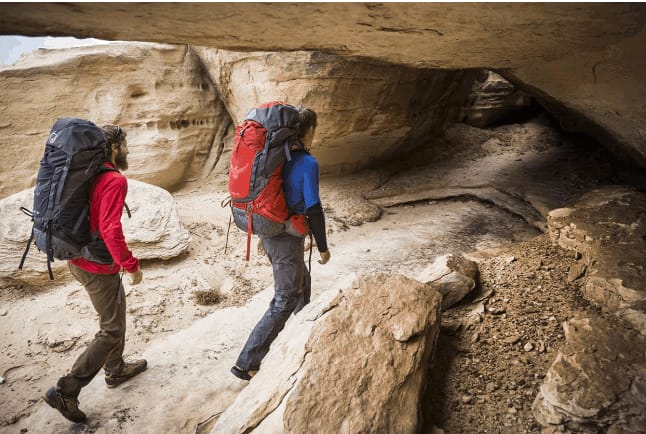
Hiking Backpack FAQ
How do I choose the right size hiking backpack?
Your pack size should match your trip length and gear needs. For a weekend trip, 30–50L is ideal. Multi-day hikes may require 50–70L, while extended expeditions call for 70+. Always factor in your torso length, not just your height.
What is the best hiking backpack for beginners?
Look for a pack that balances comfort, adjustability, and simplicity. The Gregory Zulu 30 (men’s) and Osprey Eja 48 (women’s) are excellent packs for beginners, offering breathable back panels and intuitive storage without overcomplication.
What’s the best lightweight backpack for hiking?
For ultralight adventures, the Osprey Exos and Hyperlite Mountain Gear Southwest 2400 are top-rated. They offer durability, support, and weight savings for fastpackers and minimalists.
Are hydration packs good for hiking?
Yes. Hydration reservoir packs let you sip water on the go without removing your bag—perfect for day hikes or hot climates where staying hydrated is critical.
Final Thoughts
Choosing the right hiking backpack means finding the right balance—between comfort and capacity, features and simplicity, weight and durability. Whether you’re new to the trail or preparing for your next long-distance trek, the right pack will make all the difference.
This hiking backpack buying guide has covered everything from how to choose a hiking backpack based on trip length and fit, to identifying essential features and matching top-rated packs to your needs.
If you’re still undecided, remember: the best hiking backpack is the one you forget you’re wearing.
Explore our full range of hiking backpacks and find the pack that fits your trail, your gear, and your goals.

